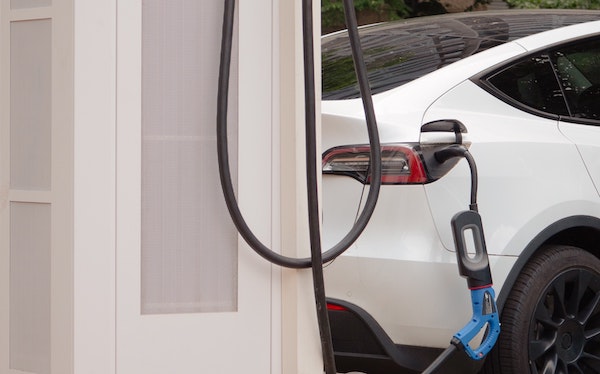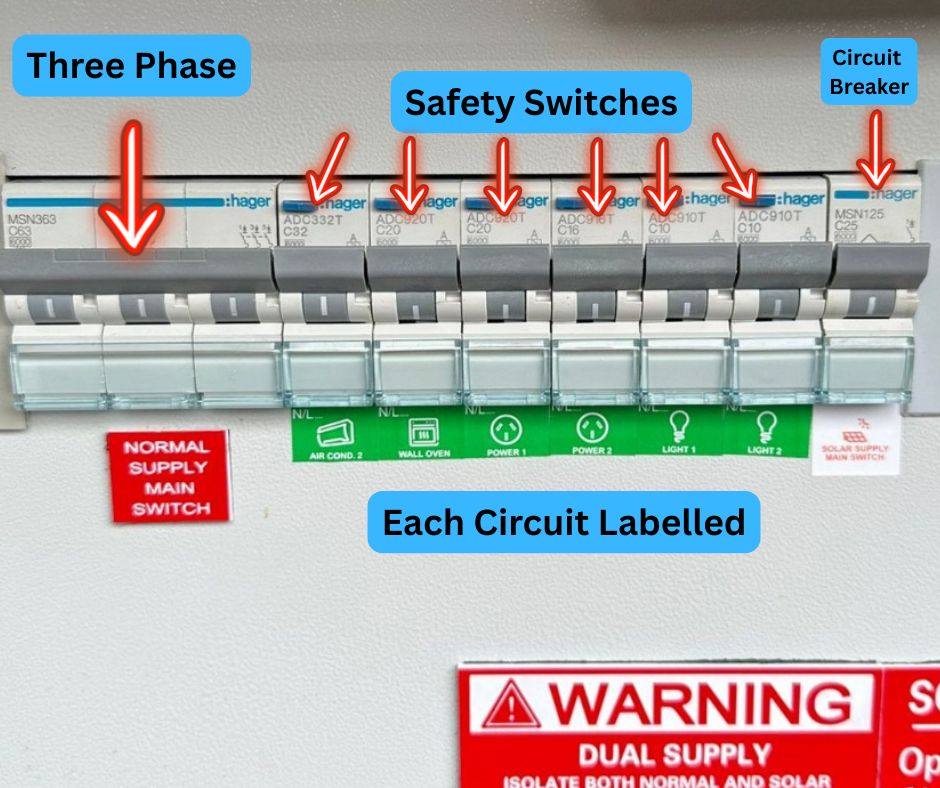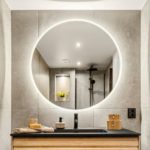With an increasing number of Brisbane homeowners embracing electric vehicles, the installation of a home EV charger has become a standard practice akin to setting up solar panels. However, before you connect your new charger, it’s essential to tackle a critical question: can your switchboard manage the extra electrical load? Understanding this aspect is crucial for ensuring a safe and efficient charging experience.
At Precision Electrical & Air, we have played a pivotal role in the installation of hundreds of EV chargers throughout Brisbane and its surrounding suburbs. In many residential properties, the switchboard often emerges as the primary component in need of an upgrade. This upgrade is vital to ensure that the charging of your electric vehicle is conducted safely, complies with local regulations, and operates efficiently.

Understanding the Importance of Dedicated Circuits for Your EV Charger
A home EV charger operates differently from typical household appliances like kettles or toasters. Standard home chargers (which range from 7kW to 22kW) typically draw significant amounts of current, often requiring between 32 to 50 amps. Therefore, they must be installed on a dedicated circuit to ensure they function optimally without causing any electrical issues.
To meet Australian and Queensland electrical standards, your EV charger circuit must adhere to several essential requirements, including:
- A dedicated circuit exclusively reserved for the charger, ensuring it has the necessary capacity.
- RCD (safety switch) protection as required by AS/NZS 3000:2018 Wiring Rules, ensuring safety during operation.
- Effective load management strategies to help prevent electrical overloads that could compromise safety.
- Sufficient circuit space and amp capacity to support the EV charger in addition to other household electrical loads.
Simply connecting your EV charger to an existing power outlet or an outdated switchboard not only presents safety hazards but is also non-compliant with Queensland electrical regulations, which could result in severe consequences.
Identifying the Signs That Your Switchboard Requires an Upgrade
If your home is over 15 to 20 years old, there’s a significant likelihood that your switchboard may not have the capacity needed to manage the demands of modern electrical systems. Our experienced electricians frequently uncover:
- Outdated ceramic fuses or asbestos backing boards, which pose serious safety risks.
- Lack of safety switches (RCDs), increasing your home’s vulnerability to electrical hazards.
- Overcrowded or undersized switchboards that do not provide enough spare circuits for future needs.
- Regular circuit breaker tripping or flickering lights when high-load appliances are being used, indicating overload issues.
- Single-phase supply that struggles to accommodate air conditioning, solar energy systems, and now, EV charging.
Any of these warning signs indicate that your switchboard may need a switchboard upgrade before you can safely proceed with the installation of your EV charger.
Essential Queensland Electrical Standards for EV Charger Installations
In Queensland, each EV charger installation must comply with several critical standards to ensure safety and functionality:
- AS/NZS 3000:2018 Wiring Rules (Section 7.3 – Electric Vehicle Charging Equipment), outlining the requirements for safe installations.
- Electrical Safety Regulation 2013 (Qld) — mandates that all electrical work must be carried out by a licensed electrician to ensure safety and compliance.
- Queensland Electrical Safety Office (ESO) requirements that provide guidelines regarding the use of safety switches and effective load balancing.
- Obtaining a Certificate of Testing and Safety Compliance upon completion of the installation to verify adherence to safety standards.
Hiring unlicensed individuals for installations or attempting DIY electrical work is illegal and might invalidate warranties, leaving homeowners exposed to significant fire hazards and liability risks.
Step-by-Step Guide to Your Switchboard Upgrade Process
When you reach out to Precision Electrical & Air, here’s what you can expect during the switchboard upgrade procedure:
- Comprehensive Assessment of Switchboard and Supply – Our expert team will carefully examine your switchboard, cabling, and main power supply to ascertain their capacity for safely accommodating EV charging needs.
- Conducting Load Calculations – We will perform calculations to evaluate the total electrical demand across all major appliances, ensuring your home can efficiently support the addition of new circuits.
- Tailored Upgrade Recommendations – If necessary, we will install a new switchboard equipped with RCDs, circuit protection, and surge protection, which will also facilitate future expansion capabilities.
- Thorough Documentation & Compliance Verification – All installations will be certified and documented in accordance with your electricity distributor’s regulations, ensuring peace of mind.
Most switchboard upgrades are typically completed within a single day, minimizing disruptions to your daily routines and household activities.

Integrating Your Existing Solar or Battery Systems with EV Charger Installation
If you already have a solar or battery system in place, that’s excellent news! However, it’s crucial to evaluate how your EV charger will integrate with these systems. Without proper load balancing, your charger might draw too much power from the grid or disrupt the operation of your solar inverter, leading to efficiency losses.
We design systems that:
- Maximize charging times to fully utilize your own solar energy generation.
- Coordinate the functioning of solar, battery, and EV charging systems through comprehensive load management solutions tailored to your home’s needs.
- Prepare your residence for future expansions, such as the capability to support an additional electric vehicle or increasing battery storage.
Determining When Three-Phase Power is Essential for Your EV Charger
While most Brisbane homes can efficiently operate a 7kW charger on single-phase power, upgrading to three-phase power can be beneficial in specific situations:
- If you seek faster charging speeds (up to 22kW) for your electric vehicle.
- If you plan to operate two EV chargers or multiple high-demand appliances simultaneously.
- If you currently have or are considering installing a large solar system (6.6kW+) to enhance energy efficiency.
- If you are upgrading your electrical system for improved long-term capacity and efficiency.
Three-phase power offers more stable voltage, faster charging, and balanced energy consumption, making it an ideal choice for future-proofing your home’s electrical setup. For additional details, please visit our Three-Phase Installation Brisbane page.
Reasons to Choose Precision Electrical & Air as Your Trusted EV Charging Specialists in Brisbane
Our dedicated team comprises licensed Queensland electricians who specialize in EV charger installations, switchboard upgrades, and three-phase power conversions. We pride ourselves on our integrity and transparency; if your current setup is safe and compliant, we will inform you rather than recommend unnecessary work.
We collaborate with leading charger brands, including Tesla, Zappi, Wallbox, and Ocular, ensuring that your EV charging system operates efficiently and safely for years to come.
Key Factors to Consider for Your EV Charger Installation
If you are considering installing an EV charger at home in Brisbane, the first step should be assessing your switchboard. A quick evaluation can help determine whether it is safe, compliant, and capable of handling the additional load or if an upgrade is necessary to optimize your system for future requirements.
For more information, explore our EV Charger Installation Brisbane page, or contact Precision Electrical & Air for a free assessment.
The Article: Switchboard Upgrade for Home EV Charger Installation in Brisbane first appeared on https://writebuff.com
The Article Home EV Charger Installation: Switchboard Upgrade in Brisbane Was Found On https://limitsofstrategy.com

